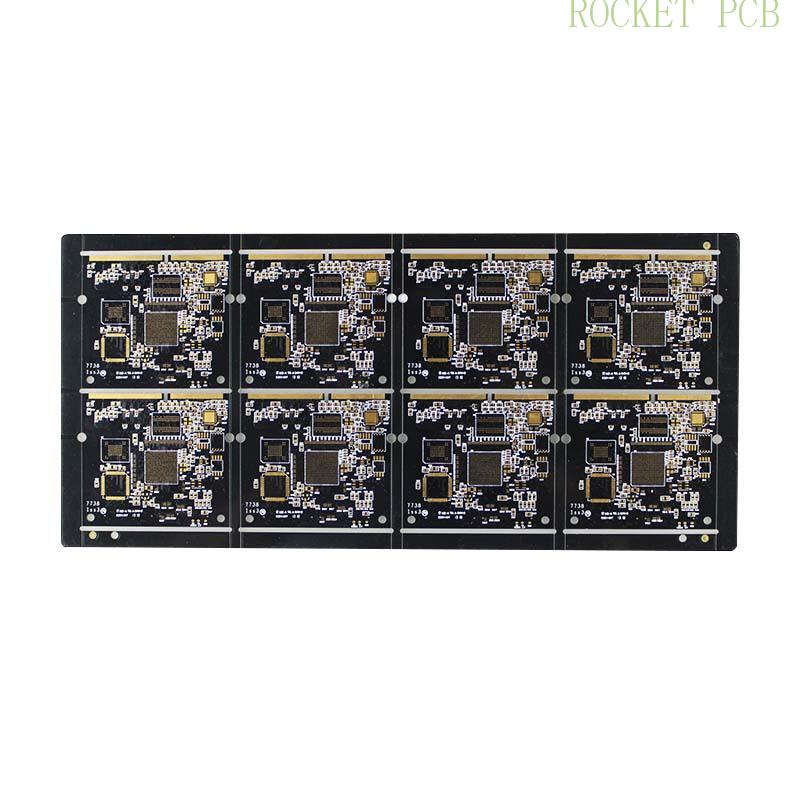DFM Overview
DFM is design for PCB manufacturing, which is the core technology of concurrent engineering. Design and manufacturing are the two most important links in product life cycle. Concurrent engineering is to consider the manufacturability and assemblability of products at the beginning of design. So DFM is the most important supporting tool in concurrent engineering. The key of the system is the process analysis of design information, the evaluation of manufacturing rationality and the suggestion of improving design. In this paper, we will briefly introduce the general technical requirements of DFM in PCB process.
General requirements
As a general requirement of PCB design, this standard standardizes PCB design and manufacturing, and realizes effective communication between CAD and CAM.
Our company takes the design drawings and documents as the production basis in document processing.
1. Base material
The base material of PCB generally adopts epoxy glass cloth copper clad laminate, namely FR4.
2. Copper foil
a) More than 99. 9% of electrolytic copper;
b) The thickness of copper foil on the surface of finished double-layer plate shall be no less than 35um (1oz); if there are special requirements, it shall be specified in the drawing or document.

PCB structure, dimensions and tolerances
1.Structure
a) All relevant design elements constituting PCB shall be described in the design drawing. The appearance should be represented by mechanical1 layer (preferred) or keepoutlayer. If it is used in the design document at the same time, generally, the keepoutler is used to shield without opening holes, but mechanical1 is used to represent the forming.
b) In the design drawing, it means to open long slot holes or hollows, and use mechanical1 layer to draw corresponding shapes.
2.Board thickness tolerance
3.Dimension tolerance
The overall dimensions of PCB shall meet the requirements of design drawings. When there is no specification in the drawing, the overall dimension tolerance is ± 0. 2mm. (except for V-CUT products)
4 Flatness (warpage) tolerance
The flatness of PCB shall meet the requirements of design drawings.
Printed wire and pad
1 Layout
a) In principle, the layout, line width and line spacing of printed wires and pads shall be in accordance with the provisions of the design drawings. However, our company will have the following treatment: properly compensate the line width and pad ring width according to the process requirements; generally, we will increase pad as much as possible for single panel, so as to enhance the reliability of customer welding.
b) When the design line spacing can not meet the process requirements (too dense may affect the performance and Manufacturability), our company will adjust it according to the pre manufacturing design specifications.
c) In principle, we suggest that the inner diameter of via should be set above 0. 3 mm, the outer diameter should be set above 0. 7 mm, the line spacing should be designed as 8 mil, and the line width should be more than 8 mil. In order to minimize the production cycle, reduce the manufacturing difficulty.
d) Our minimum drilling tool is 0. 2, and the finished hole is about 0. 15mm. The minimum line spacing is 3 mil and the thinnest line width is 3 mil. (but longer manufacturing cycle and higher cost)
2 Conductor width tolerance
The internal control standard of width tolerance of printed wire is ± 15%
3 Grid processing
a) In order to avoid blistering on copper surface during wave soldering and PCB board bending due to thermal stress after heating, it is recommended to lay the large copper surface in grid form.
b) The grid spacing is ≥ 10mil (no less than 8mil), and the grid width is ≥ 10mil (no less than 8mil).
4 Treatment of thermalpad
In a large area of grounding (electricity), there are often legs of components connected with them. The treatment of connecting legs takes into account the electrical performance and process requirements. The cruciform pad (heat insulation pad) can greatly reduce the possibility of false solder joint due to excessive heat dissipation of cross section during welding.
Hole diameter
1 The definition of PTH and NPTH
a) By default, the following method is non metallized hole:
When the customer sets the nonmetallic property of mounting hole in Protel99SE advanced properties (remove the plated option in the Advanced menu), our company will default to the nonmetallic hole.
When the customer directly uses the keylayout or mechanical1 layer arc to represent the hole in the design document (no more holes are placed separately), our company defaults to non-metallic hole.
When the customer places the word npth near the hole, our company defaults to non metallization of the hole.
When the customer clearly requires the corresponding NPTH in the design notice, it shall be handled according to the customer's requirements.
b) In addition to the above conditions, element holes, mounting holes, through holes, etc. shall be metallized.
2 Hole size and tolerance
a) PCB component holes and mounting holes in the design drawings are assumed to be the final pore size of the finished product. The hole diameter tolerance is generally ± 3mil (0. 08mm);
b) Through hole (via hole) our general control is: negative tolerance is not required, positive tolerance is controlled within + 3mil (0. 08mm).
3 Thickness
The average thickness of copper plating layer of metallized hole is generally not less than 20um, and the thinnest part is not less than 18um.
4 Hole wall roughness
PTH hole wall roughness is generally controlled at ≤ 32um
5 Pin hole problem
a) The minimum positioning pin of our CNC milling machine is 0. 9mm, and the three pin holes should be triangular.
b) When the customer has no special requirements and the aperture in the design documents is less than 0. 9mm, we will add pin holes at the appropriate position on the blank wireless path in the board or on the large copper surface.
6 Design of slot hole (slot hole)
a) It is suggested that the shape of slot hole can be drawn with mechanical1 layer (keepoutlayer); it can also be represented by connecting hole, but the connecting hole should be of the same size and the cente,r of the hole should be on the same horizontal line.
b) Our minimum slotting cutter is 0. 65mm.
c) When the slot hole is used for shielding to avoid creepage between high and low voltage, it is suggested that the diameter of slot hole should be more than 1.2mm to facilitate machining.
Solder mask
1 Coating position and defects
a) All PCB surfaces except pad, mark point and test point shall be coated with solder mask.
b) If the customer uses fill or track to represent the pad, it is necessary to draw a figure of corresponding size on the soldermask layer to indicate tin coating. (we strongly recommend not to use the non pad display pad before design.
c) If you need to dissipate heat on the large copper skin or spray tin on the wire, the corresponding size figure must also be drawn with the soldermask layer to show the tin coating.
2 Adhesion
The adhesion of the solder mask is in accordance with the grade 2 requirements of American IPC-A-600F.
3 Thickness
The thickness of the solder mask is in accordance with the following table
Characters and etch marks
1. Basic requirements
a) The character of PCB should be designed according to the character height of 30mil, the character width of 5MIL and the character spacing of 4mil or above, so as to avoid affecting the legibility of characters.
b) Etched (metal) characters shall not be bridged with conductors and adequate electrical clearance shall be ensured. Generally, the word height is 30mil and the width is more than 7mil.
c) When there is no specific requirement for the customer's characters, our company will adjust the matching proportion of characters according to the process requirements of our company.
d) When there is no specific requirement from customers, our company will print our trademark, material number and cycle at the appropriate position of silk printing layer in the plate according to our process requirements.
2. Processing of pad / SMT on text
There should be no silk screen mark on pad to avoid false soldering. When the customer has designed pad / SMT, our company will make appropriate mobile processing. The principle is not to affect the correspondence between the identification and the device.
The concept of layer and the design of mark point processing layer
1. By default, our company takes the top layer (i. e. toplayer) as the front face, and the characters of topoverlay silk screen layer are positive.
2. If the signal layer is drawn on the top layer of a single panel, it means that the line of the layer is the front face.
3. In a single panel, if the signal layer is drawn on the bottom layer, it means that the line of the layer is the perspective plane.
The design of mark point
4. When the customer needs mark point positioning for SMT for the panel file, mark must be placed properly, which is a circle with a diameter of 1. 0 mm.
5. When the customer has no special requirements, we use the arc of soler1. 5mm to represent the solder free flux to enhance the identifiability. FMask layer places one.
6. When the customer has a surface patch for the panel file, and there is a process edge without mark, our company generally adds a mark point at the diagonal center of the process edge; when the customer has a surface patch but no process edge for the panel file, we generally need to communicate with the customer whether to add mark.
About V-CUT
1. There is no gap between V-CUT panel and V-CUT panel, but pay attention to the distance between conductor and V-CUT center line. In general, the conductor spacing on both sides of V-CUT line should be more than 0. 5mm, that is to say, the distance between conductor and plate edge in single board should be more than 0. 25mm.
2. The representation method of V-CUT line is as follows: generally, the shape of V-CUT line is represented by the layer of keepoutler (mech1), and the words "V-CUT" should be marked at the joint of boards.
3. Generally, the residual depth after V-cutting is 1 / 3 of the plate thickness, which can be adjusted according to the customer's residual thickness requirements.
4. After the V-CUT products are broken off, the size of the glass fiber will be slightly out of tolerance, and some products will be larger than 0. 5mm.
5. The V-CUT knife can only walk straight line, not curve and broken line, and the thickness of drawing plate is generally more than 0. 8mm.
Surface treatment process
When the customer has no special requirements, our company adopts the method of hot air leveling (HASL) by default. (i. e. spray tin: 63 tin / 37 lead)
The above general technical requirements for DFM (single and double sided boards) are the reference for our customers when designing PCB documents, and hope to reach some agreement on the above aspects, so as to better realize the communication between CAD and cam, better realize the common goal of DFM, shorten the product manufacturing cycle and reduce the production cost.
Conclusion
The above general technical requirements of DFM (single and double sided boards) are only the reference for Rocket PCB to provide customers with PCB documents design. We hope to negotiate and reconcile the above aspects, so as to better realize the communication between CAD and cam, better achieve the common goal of DFM, shorten the product manufacturing cycle and reduce the production cost.





